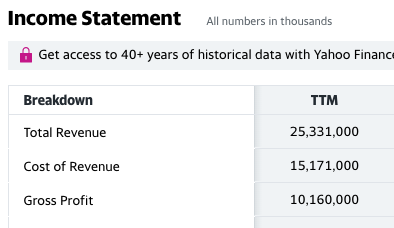
The world's most successful people are known and celebrated for all different things.
Some are famous for their skills and talents, while others are distinguished by their courage or profound impact on society.
But one thing many of the world's most successful people have in common is their ability to inspire others.
Here are 110 inspirational quotes from highly successful people.
Emmie Martin contributed to an earlier version of this post.
SEE ALSO: 13 inspiring quotes from Abraham Lincoln on liberty, leadership, and character
On life and death

• "The two most important days in your life are the day you are born and the day you find out why." —Mark Twain
• "In three words I can sum up everything I've learned about life: It goes on." —Robert Frost
• "I believe every human has a finite number of heartbeats. I don't intend to waste any of mine." —Neil Armstrong
• "You only live once, but if you do it right, once is enough." —Mae West
• "Your time is limited, so don't waste it living someone else's life." —Steve Jobs
• "Live as if you were to die tomorrow. Learn as if you were to live forever." —Mahatma Gandhi
• "If you live long enough, you'll make mistakes. But if you learn from them, you'll be a better person." —Bill Clinton
• "Life is short, and it is here to be lived." —Kate Winslet
• "Don't count the days, make the days count." —Muhammad Ali
• "Be yourself. Everyone else is already taken." —Oscar Wilde
• "Don't let the fear of striking out hold you back." —Babe Ruth
• "It is never too late to be what you might have been." —George Eliot
• "The longer I live, the more beautiful life becomes." —Frank Lloyd Wright
• "Every moment is a fresh beginning." —T.S. Eliot
• "The more you praise and celebrate your life, the more there is in life to celebrate." —Oprah Winfrey
• "When you cease to dream you cease to live." —Malcolm Forbes
• "Life isn't about finding yourself. Life is about creating yourself." —George Bernard Shaw
On happiness

• "If you spend your whole life waiting for the storm, you'll never enjoy the sunshine." —Morris West
• "Don't cry because it's over, smile because it happened." —Dr. Seuss
• "If you want to be happy, set a goal that commands your thoughts, liberates your energy, and inspires your hopes." —Andrew Carnegie
• "If you can do what you do best and be happy, you're further along in life than most people." —Leonardo DiCaprio
• "We should remember that just as a positive outlook on life can promote good health, so can everyday acts of kindness." —Hillary Clinton
• "The purpose of our lives is to be happy." —Dalai Lama
• "The most important thing is to enjoy your life — to be happy — it's all that matters." —Audrey Hepburn
• "Happiness can exist only in acceptance." —George Orwell
• "It isn't what you have, or who you are, or where you are, or what you are doing that makes you happy or unhappy. It is what you think about." —Dale Carnegie
• "No one can make you feel inferior without your consent." —Eleanor Roosevelt
• "Happiness is when what you think, what you say, and what you do are in harmony." —Mahatma Gandhi
On courage, hope, and belief

• "Believe you can and you're halfway there." —Theodore Roosevelt
• "We must accept finite disappointment, but never lose infinite hope." —Martin Luther King, Jr.
• "Don't limit yourself. Many people limit themselves to what they think they can do. You can go as far as your mind lets you. What you believe, remember, you can achieve." —Mary Kay Ash
• "Courage is grace under pressure." —Ernest Hemingway
• "What the mind of man can conceive and believe, it can achieve." —Napoleon Hill
• "If you don't stand for something, you'll fall for anything." —Malcolm X
• "It often requires more courage to dare to do right than to fear to do wrong." —Abraham Lincoln
• "Efforts and courage are not enough without purpose and direction." —John F. Kennedy
• "If you are going through hell, keep going." —Winston Churchill
• "Once you choose hope, anything's possible." —Christopher Reeve
• "Learn from yesterday, live for today, hope for tomorrow. The important thing is not to stop questioning." —Albert Einstein
• "All our dreams can come true if we have the courage to pursue them." —Walt Disney
• "Whether you think you can or you think you can't, you're right." —Henry Ford
• "It takes courage to grow up and become who you really are." —E.E. Cummings
• "The best way to not feel hopeless is to get up and do something. Don't wait for good things to happen to you. If you go out and make some good things happen, you will fill the world with hope, you will fill yourself with hope." —Barack Obama
• "Your voice can change the world." —Barack Obama
• "The more you dream, the farther you get." —Michael Phelps
• "Find out who you are and be that person. That's what your soul was put on this Earth to be. Find that truth, live that truth and everything else will come." —Ellen DeGeneres
• "As long as the mind can envision the fact that you can do something, you can do it, as long as you really believe 100%." —Arnold Schwarzenegger
On taking risks

• "You must do the things you think you cannot do." —Eleanor Roosevelt
• "You miss 100% of the shots you don't take." —Wayne Gretzky
• "Some people want it to happen, some wish it would happen, others make it happen." —Michael Jordan
• "The biggest risk is not taking any risk ... In a world that's changing really quickly, the only strategy that is guaranteed to fail is not taking risks." —Mark Zuckerberg
• "The best way of learning about anything is by doing." —Richard Branson
• "If something is important enough, even if the odds are against you, you should still do it." —Elon Musk
• "Be fearless. Have the courage to take risks. Go where there are no guarantees. Get out of your comfort zone even if it means being uncomfortable. The road less traveled is sometimes fraught with barricades, bumps, and uncharted terrain. But it is on that road where your character is truly tested. Have the courage to accept that you're not perfect, nothing is and no one is — and that's OK." —Katie Couric
• "A dream doesn't become reality through magic; it takes sweat, determination and hard work." —Colin Powell
• "Two roads diverged in a wood, and I — I took the one less traveled by. And that has made all the difference." —Robert Frost (from his poem "The Road Not Taken")
• "If there is no struggle, there is no progress." —Frederick Douglass
• "Either write something worth reading or do something worth writing." —Benjamin Franklin
• "Don't be afraid to give up the good to go for the great." —John D. Rockefeller
• "Do one thing every day that scares you." —Eleanor Roosevelt
• "Always remember, you have within you the strength, the patience, and the passion to reach for the stars to change the world." —Harriet Tubman
• "But you have to do what you dream of doing even while you're afraid." —Arianna Huffington
• "If you love what you do and are willing to do what it takes, it's within your reach. And it'll be worth every minute you spend alone at night, thinking and thinking about what it is you want to design or build." —Steve Wozniak
On creativity

- "Creativity is intelligence having fun." — Albert Einstein
- "Creativity takes courage." — Henri Matisse
- "To practice any art, no matter how well or badly, is a way to make your soul grow. So do it." — Kurt Vonnegut
- "You can't use up creativity. The more you use the more you have." — Maya Angelou
- "The chief enemy of creativity is good sense." — Pablo Picasso
On attitude and outlook

• "It is our choices that show what we truly are, far more than our abilities." —J. K Rowling (from "Harry Potter and the Chamber of Secrets")
• "Look up at the stars and not down at your feet. Try to make sense of what you see, and wonder about what makes the universe exist. Be curious." —Stephen Hawking
• "In the midst of movement and chaos, keep stillness inside of you." —Deepak Chopra
• "As we look ahead into the next century, leaders will be those who empower others." —Bill Gates
• "In the middle of every difficulty lies opportunity." —Albert Einstein
• "If you always do what interests you, at least one person is pleased." —Katharine Hepburn
• "I avoid looking forward or backward, and try to keep looking upward." —Charlotte Bronte
• "Everything you can imagine is real." —Pablo Picasso
• "The best and most beautiful things in the world cannot be seen or even touched — they must be felt with the heart." —Helen Keller
• "If you're not stubborn, you'll give up on experiments too soon. And if you're not flexible, you'll pound your head against the wall and you won't see a different solution to a problem you're trying to solve." —Jeff Bezos
• "The way I see it, if you want the rainbow, you gotta put up with the rain." —Dolly Parton
• "You must expect great things of yourself before you can do them." —Michael Jordan
• "Nothing great was ever achieved without enthusiasm." —Ralph Waldo Emerson
• "Keep your face to the sunshine and you can never see the shadow." —Helen Keller
• "Identity is a prison you can never escape, but the way to redeem your past is not to run from it, but to try to understand it, and use it as a foundation to grow." —Jay-Z
• "In order to be irreplaceable one must always be different." —Coco Chanel
• "Change will not come if we wait for some other person or some other time. We are the ones we've been waiting for. We are the change that we seek." —Barack Obama
On success and failure

• "If you can't fly then run, if you can't run then walk, if you can't walk then crawl, but whatever you do you have to keep moving forward." —Martin Luther King, Jr.
• "Even if you fall on your face, you're still moving forward." —Victor Kiam
• "Success isn't about how much money you make. It's about the difference you make in people's lives." —Michelle Obama
• "If at first you don't succeed, try, try, try again." —William Edward Hickson
• "There are no mistakes, only opportunities." —Tina Fey (from her book, "Bossypants")
• "It does not matter how slowly you go, so long as you do not stop." —Confucius
• "The difference between winning and losing is most often not quitting." —Walt Disney
• "Failure is another stepping stone to greatness." —Oprah Winfrey
• "Success is most often achieved by those who don't know that failure is inevitable." —Coco Chanel
• "Don't worry about failure; you only have to be right once." —Drew Houston
• "I have not failed. I've just found 10,000 ways that won't work." —Thomas A. Edison
• "It takes 20 years to build a reputation and five minutes to ruin it. If you think about that, you'll do things differently." —Warren Buffett
• "Success is going from failure to failure without losing your enthusiasm." —Winston Churchill
• "A champion is afraid of losing. Everyone else is afraid of winning." —Billie Jean King
On relationships

• "I've learned that people will forget what you said, people will forget what you did, but people will never forget how you made them feel." —Maya Angelou
• "A hero is someone who understands the responsibility that comes with his freedom." —Bob Dylan
• "We can't help everyone, but everyone can help someone." —Ronald Reagan
• "One of the greatest diseases is to be nobody to anybody." —Mother Teresa
• "Try to be a rainbow in someone's cloud." —Maya Angelou
• "If your actions inspire others to dream more, learn more, do more and become more, you are a leader." —John Quincy Adams
• "You can't please everyone, and you can't make everyone like you." —Katie Couric
• "As you grow older, you will discover that you have two hands, one for helping yourself, the other for helping others." —Audrey Hepburn
• "When the power of love overcomes the love of power the world will know peace." —Jimi Hendrix
• "Sometimes you can't see yourself clearly until you see yourself through the eyes of others." —Ellen DeGeneres
• "You must not lose faith in humanity. Humanity is an ocean; if a few drops of the ocean are dirty, the ocean does not become dirty." —Mahatma Gandhi
















































